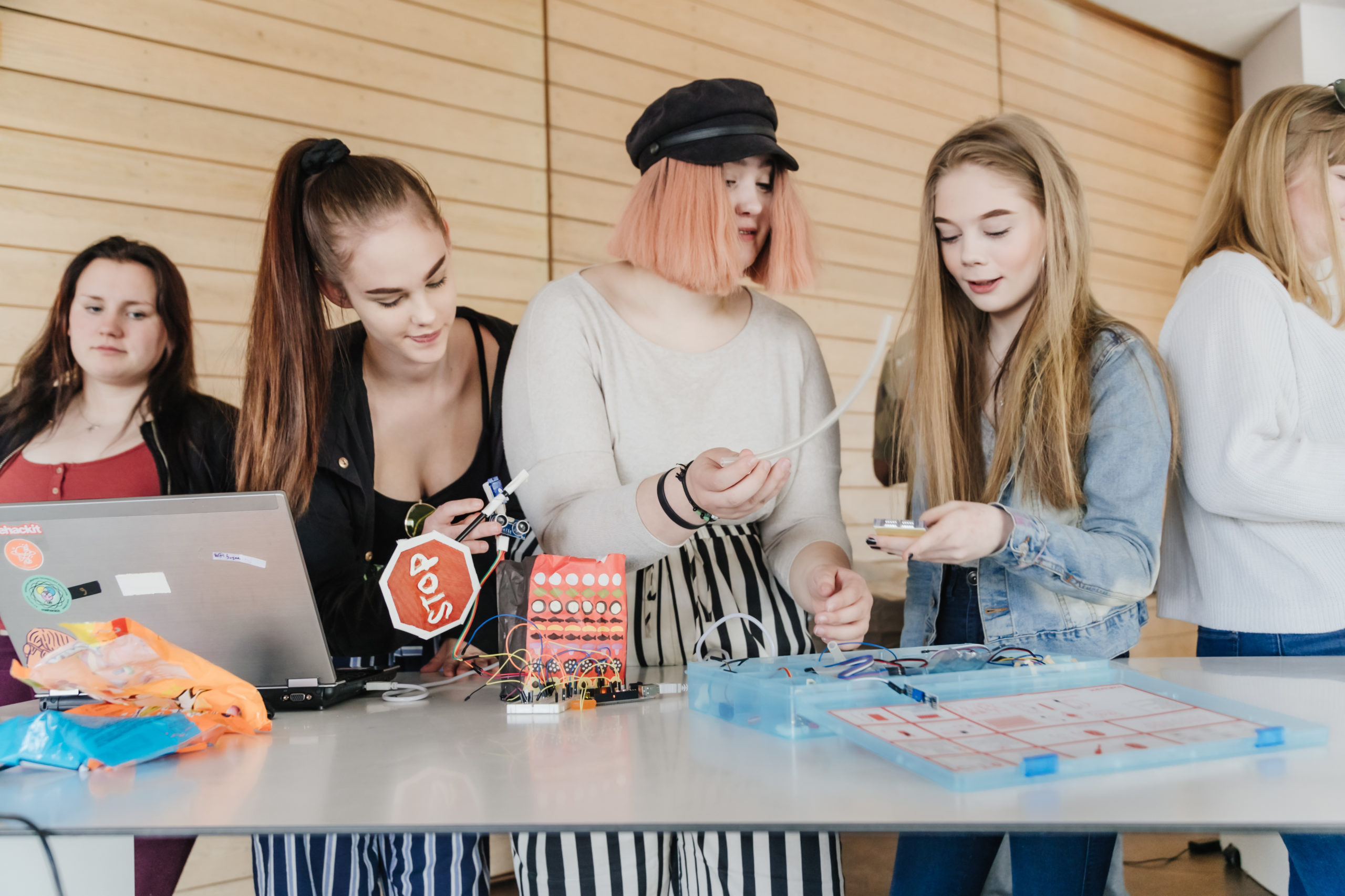“We need to give the tools for everyone to express themselves through new media”, says Heini Karppinen, the CEO of Mehackit, when we discuss why coding is an important part of the 21st century skills children need to be taught. Having a hands-on approach to coding creates an opportunity for students to realise their abilities in everyday life.
Coding – Modern-day Magic?
“The most basic definition of coding is giving instructions to the computer”, says Antti Suomalainen, colleague of Karppinen. The two work at Mehackit, a Finnish company specialised in teaching students and teachers the wonders of coding. Suomalainen emphasises that coding is something anyone can learn and understand.
Coding, as a part of technology education, is discussed largely, and not only in the context of technology companies. Nowadays it’s not something only computer nerds dive into; coding has become a huge part of our daily lives in the form of smartphones. Almost anything can be done by pressing a few buttons on the screen: ordering your groceries, paying for your petrol or even control the lighting in your home.
No wonder children who have grown up with modern technology might think it’s magic. This is why teaching coding is important. Suomalainen sees that if children take smart technology for granted, they become passive users instead of proactive innovators. Children need to realise they are capable of creating their own future with technology.
Artistic Approach Lets Children Express Themselves
How can coding be made more approachable and understandable for children and teachers? At Mehackit coding has been combined with creativity and artistic expression because “Arts and coding are surprisingly similar”, as Suomalainen puts it, and gives an example relating to music: “Think about a source code and a composition. They are both written down instructions for how a program works or a piece of music is to be performed, but if we want to see or hear them in action we have to run or play them.”
For children, artistic approach gives an opportunity to express themselves through something concrete and personal. This way ‘cold and robotic’ technological world is balanced with emotional learning. Furthermore, students’ motivation stays higher when they feel in control of their own project, and most importantly, have fun!
Raising the Future Citizens
Learning by doing approach is a huge part of the coding process. The best way for children to learn coding, is by experiencing and experimenting. Mehackit provides children the tools and video tutorials for three project-based programmes. With step by step videos children build their projects as they learn. End results vary from animations to songs to light installations. Upon seeing and hearing the outcomes of their coding projects children feel empowered and motivated to continue learning. For those who get hooked on programming, continuing is made easy, as participants will get familiar with free open source applications during their Mehackit projects.
Having children work on their own projects related to tangible issues teaches them to work as a team and solve problems as they come. This increases their You can do it -attitude and the feeling of belonging. When children see themselves as members of communities, they are more likely to have a positive impact on society. “When children get motivated and enthusiastic they will learn, and they will find their opportunities to make a better life”, Karppinen concludes.
Case: Getting Children Started with Coding in Namibia
Mehackit was one of our partners included in the Namibia pilot during summer 2019. The students from Faith Primary School and Berg-Op Academy were introduced to music programming by the company.
According to Suomalainen, the music programme was chosen because most find music fun. The programme is also good for beginners as it’s easy to get started. You can start making sounds straight away! Suomalainen and Karppinen also wanted to show that there is no need for fancy equipment. Coding can be done using just a laptop and free software.
Mehackit is official partner of Polar Partners.
Written by Polar Partners’ Marketing intern Juliaana Kärkkäinen
